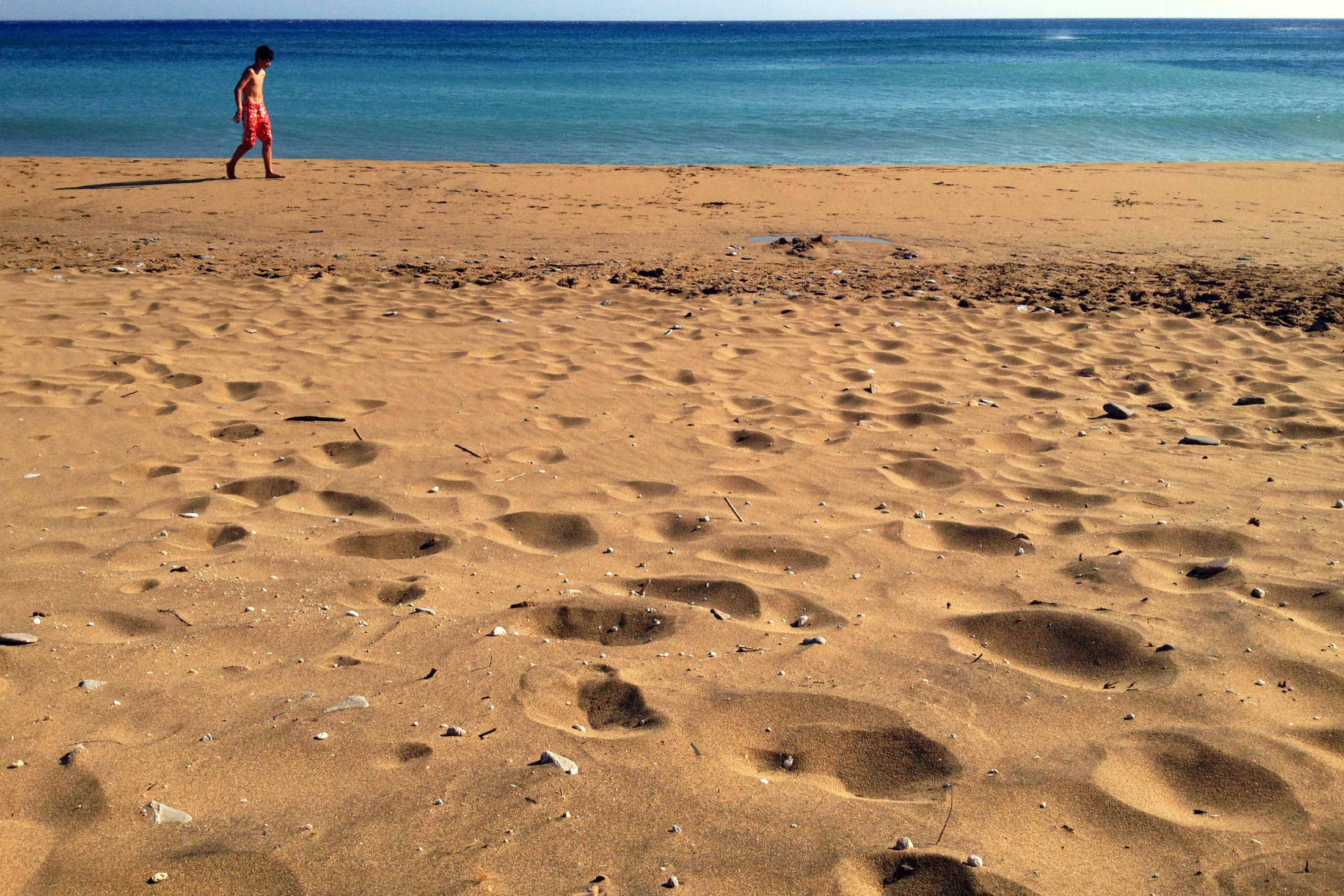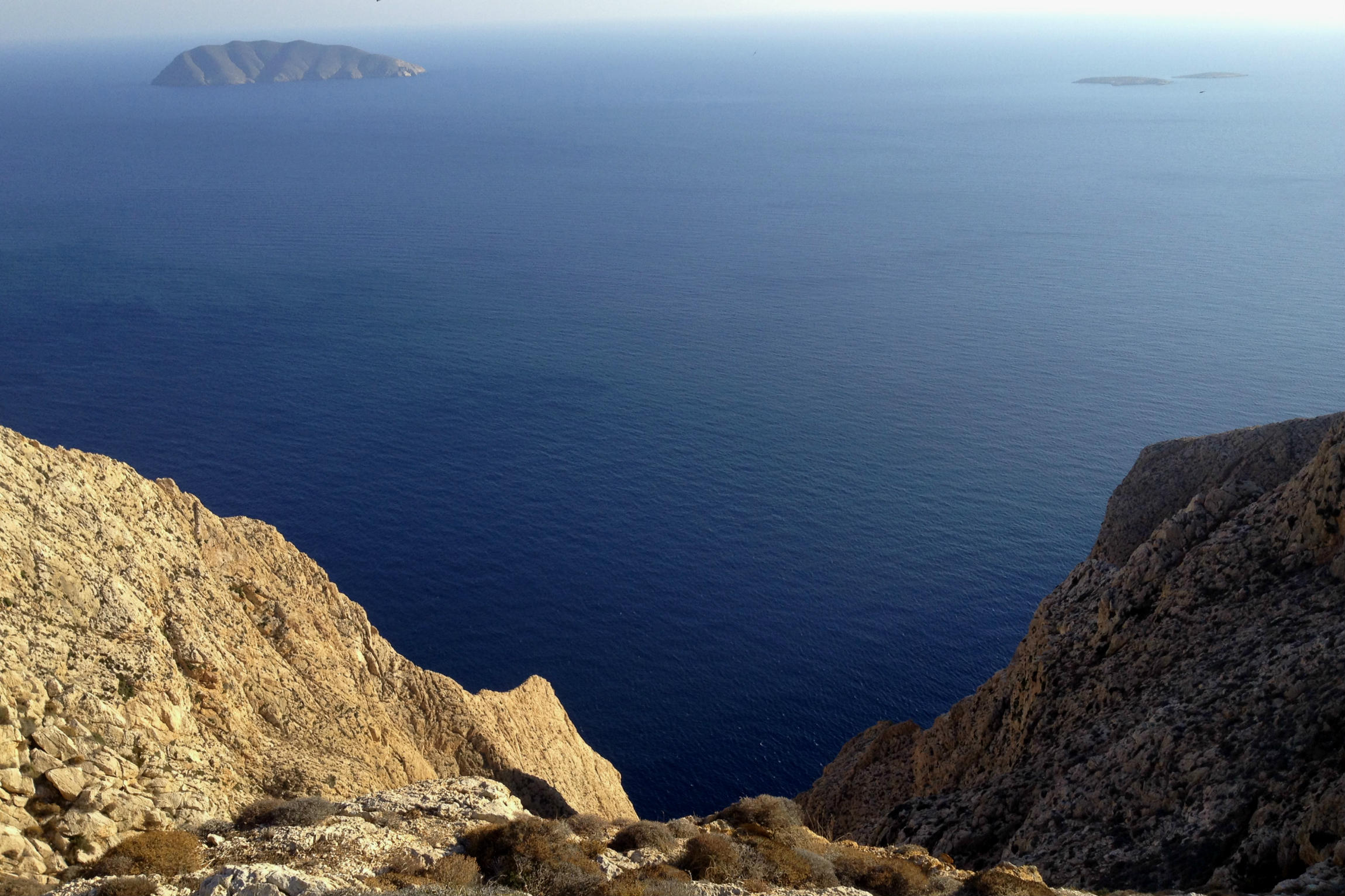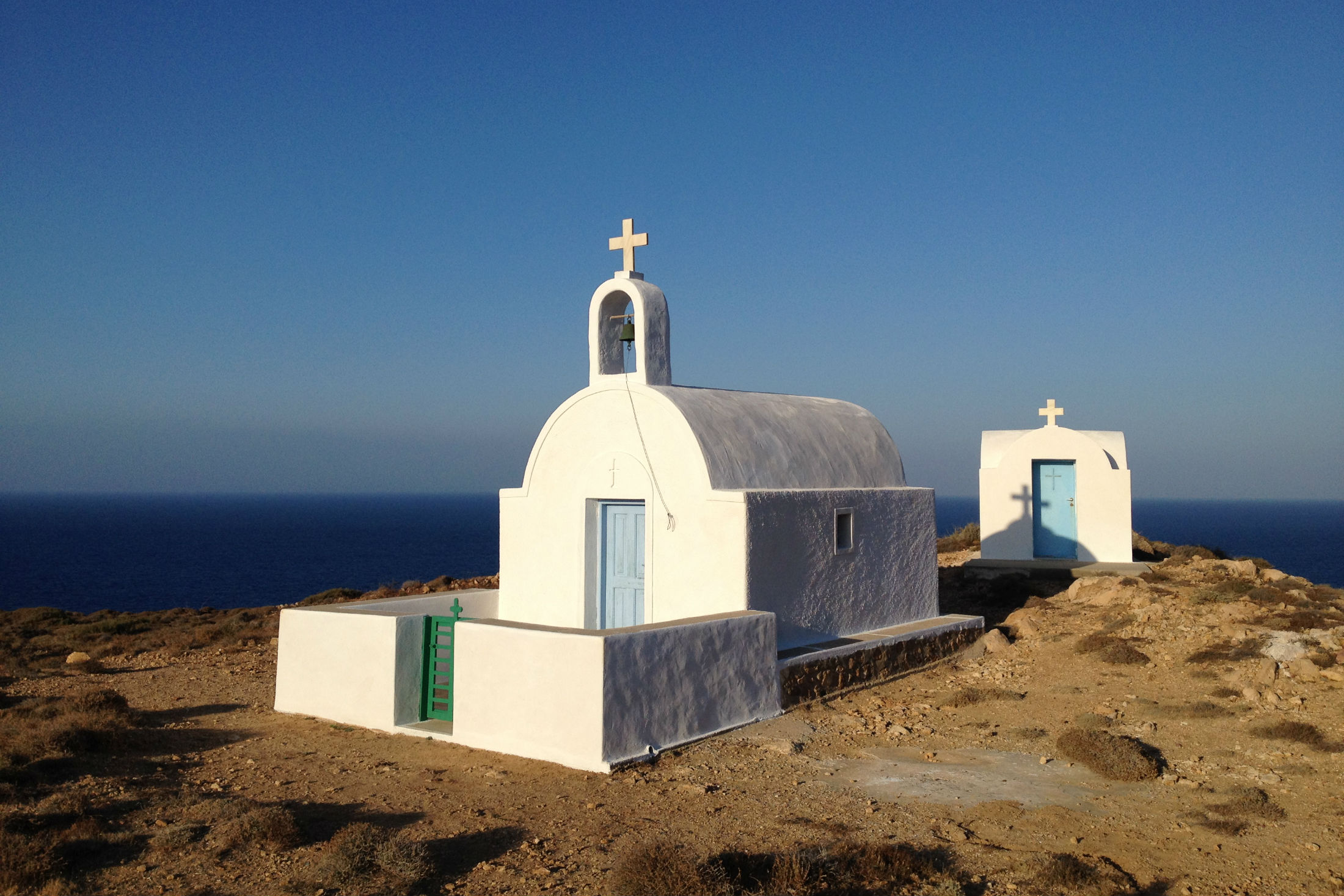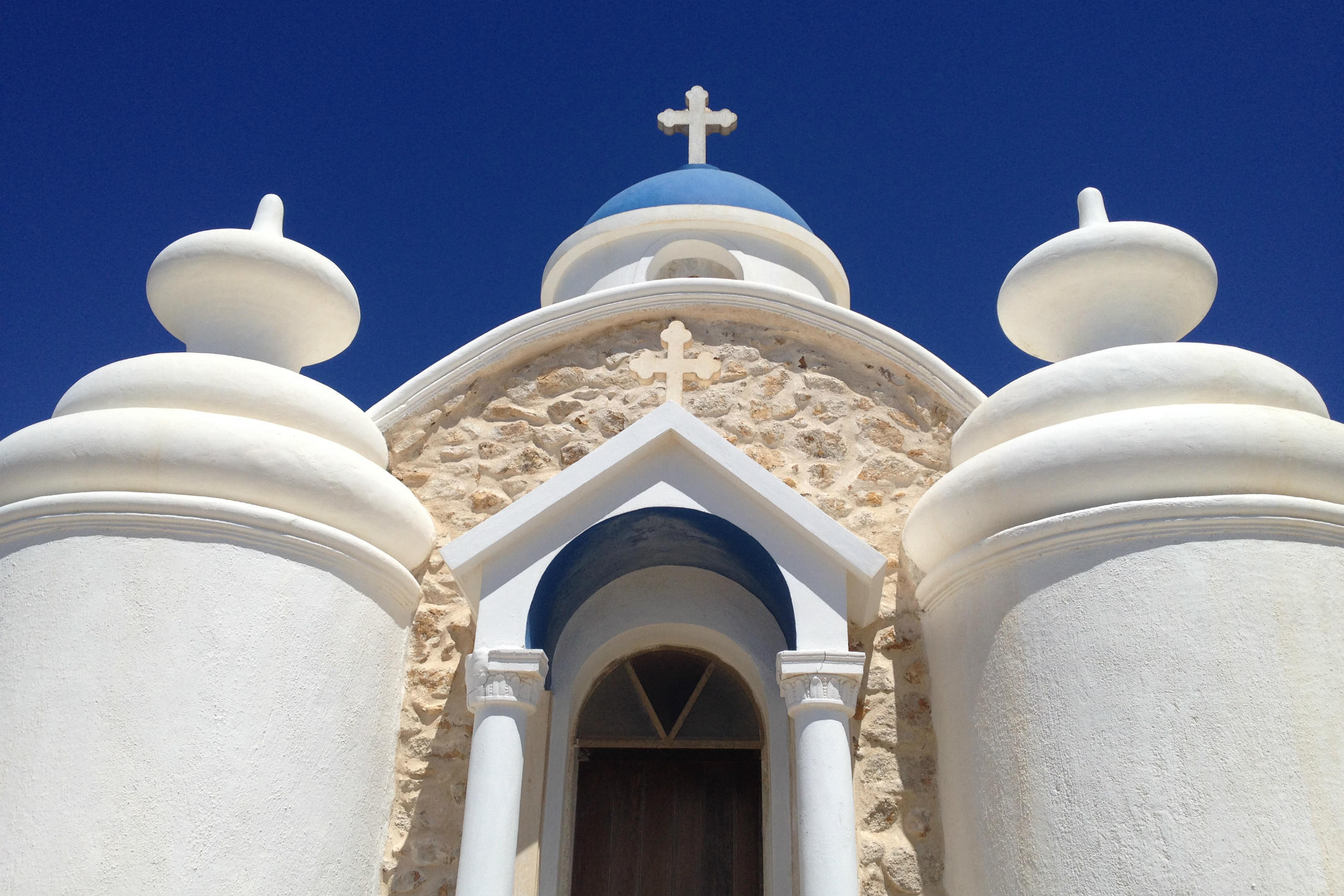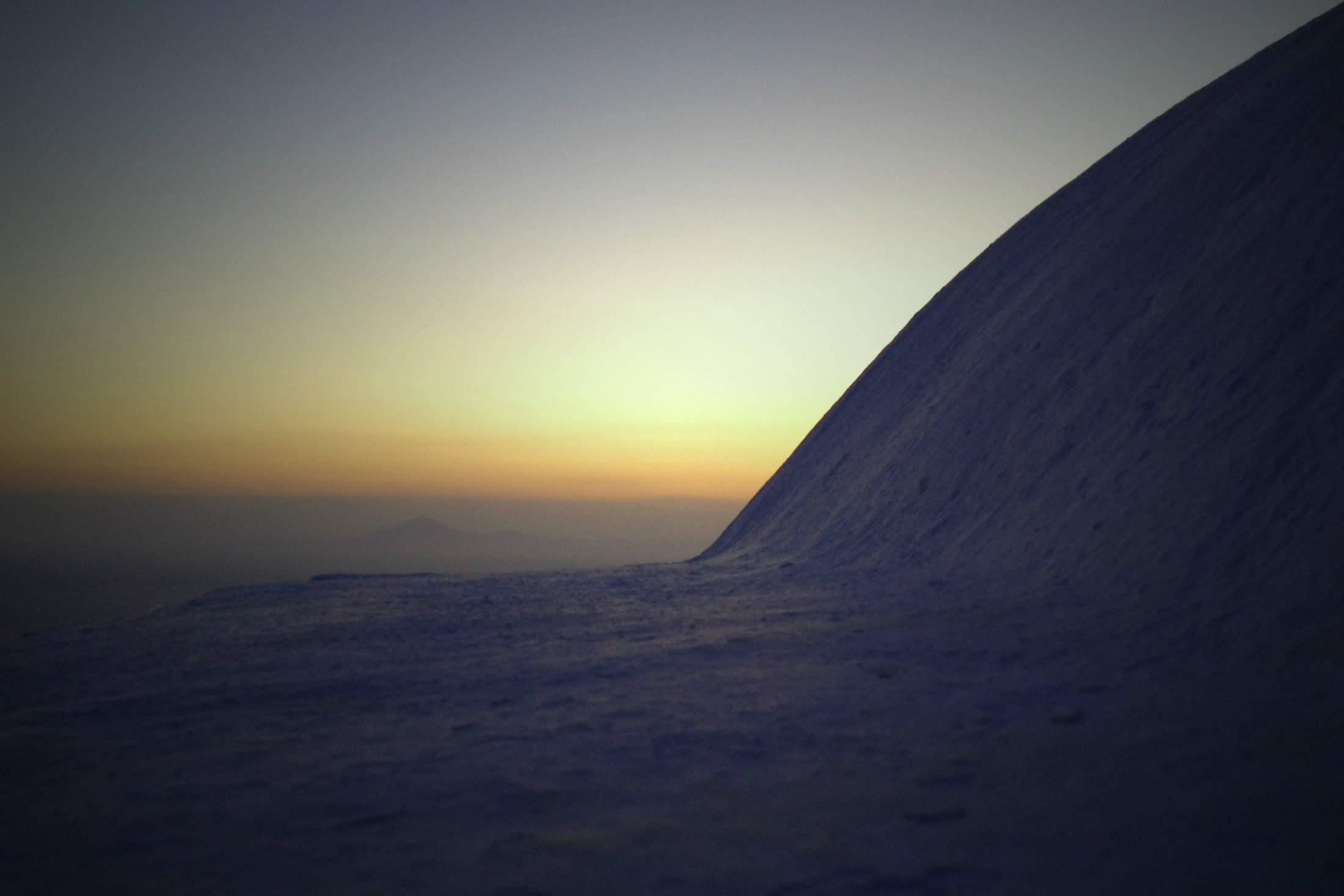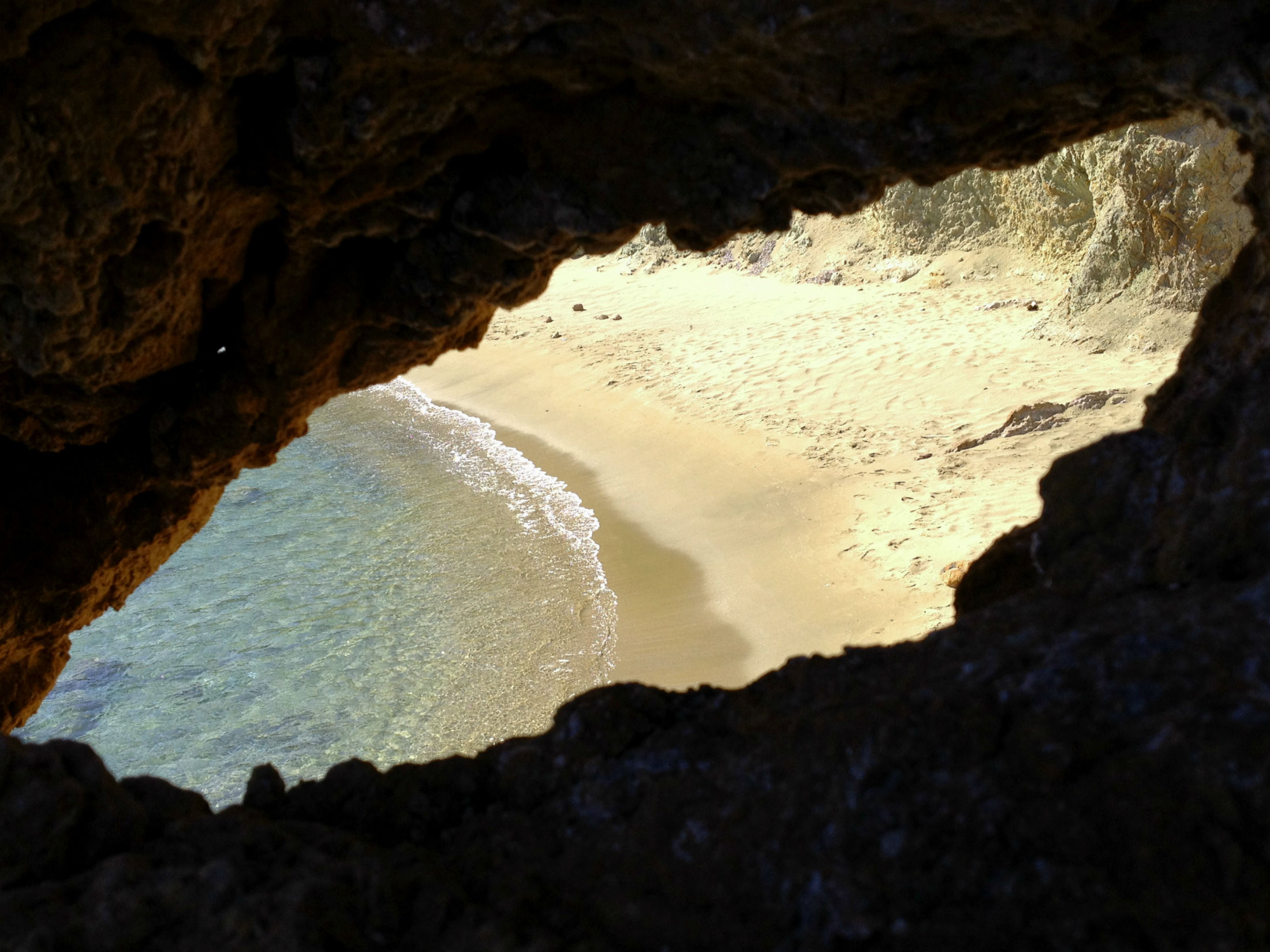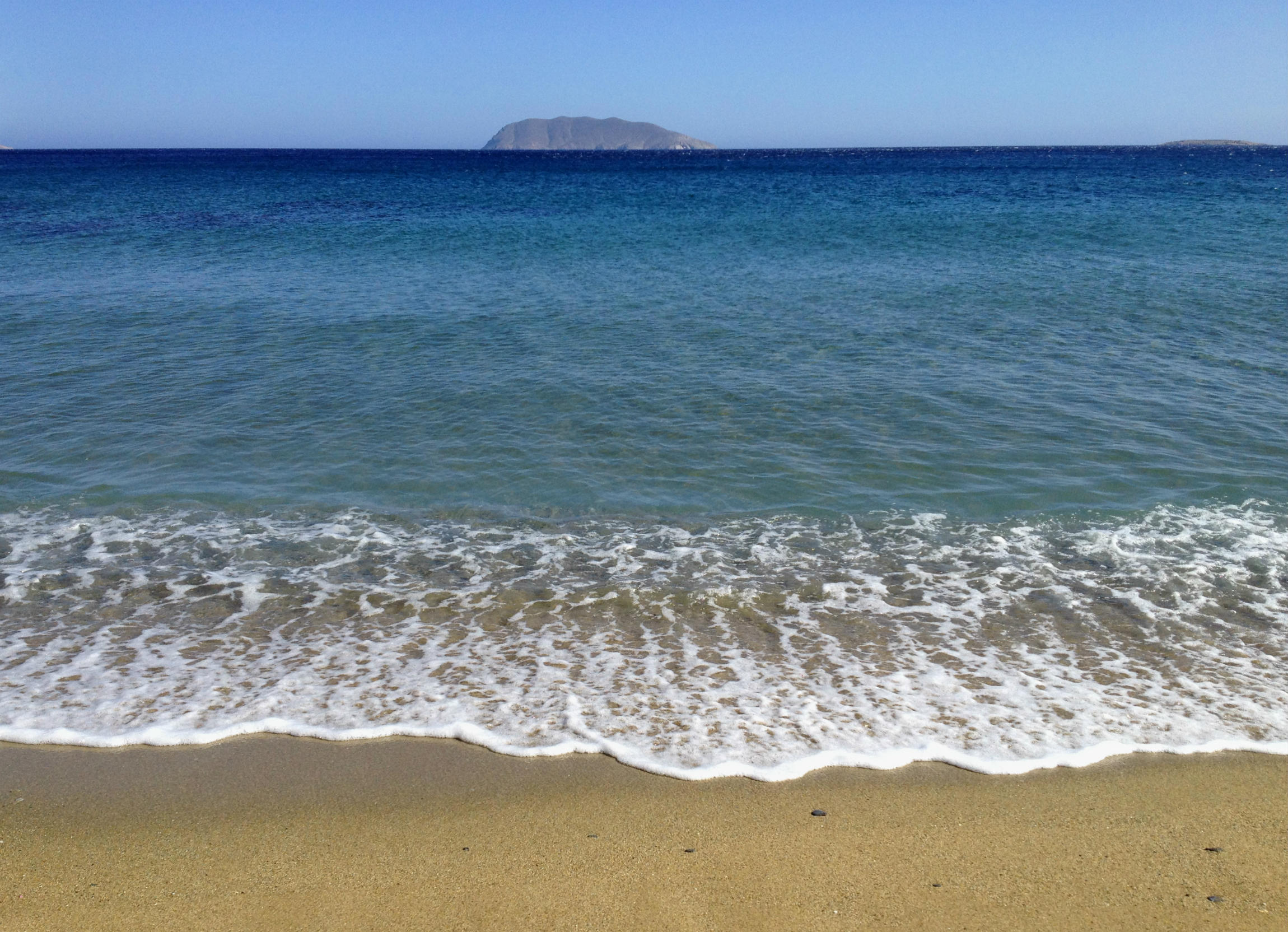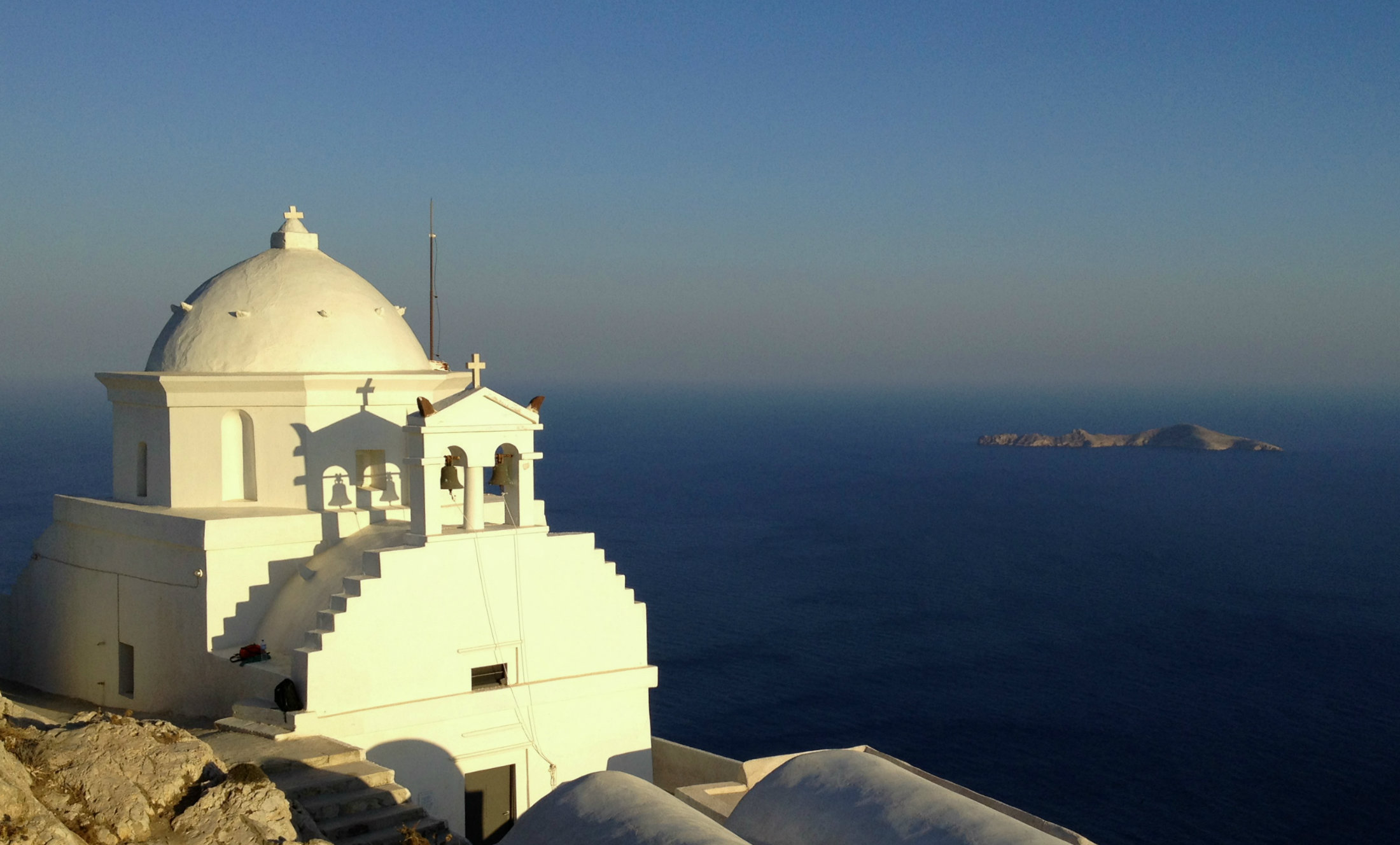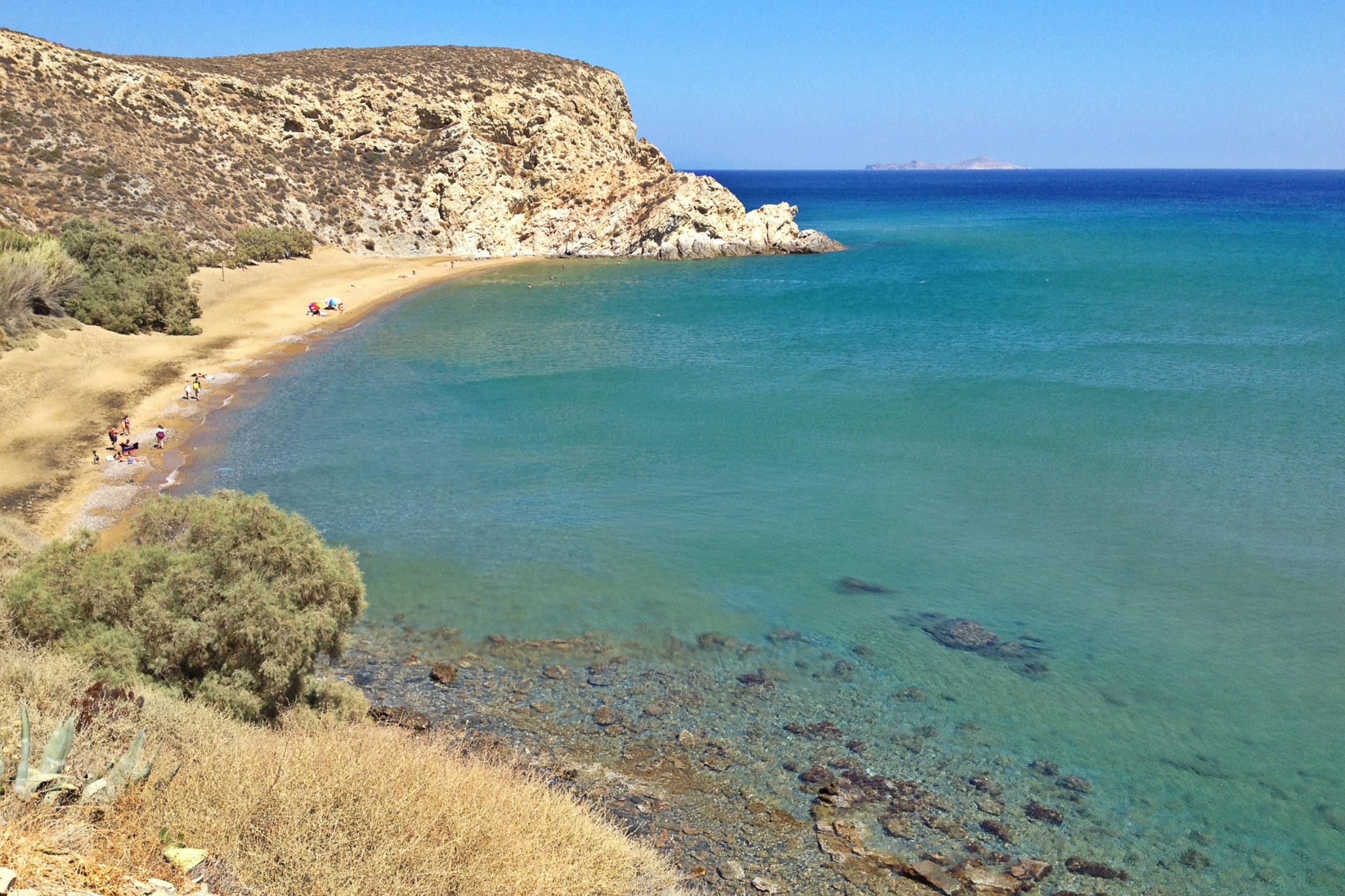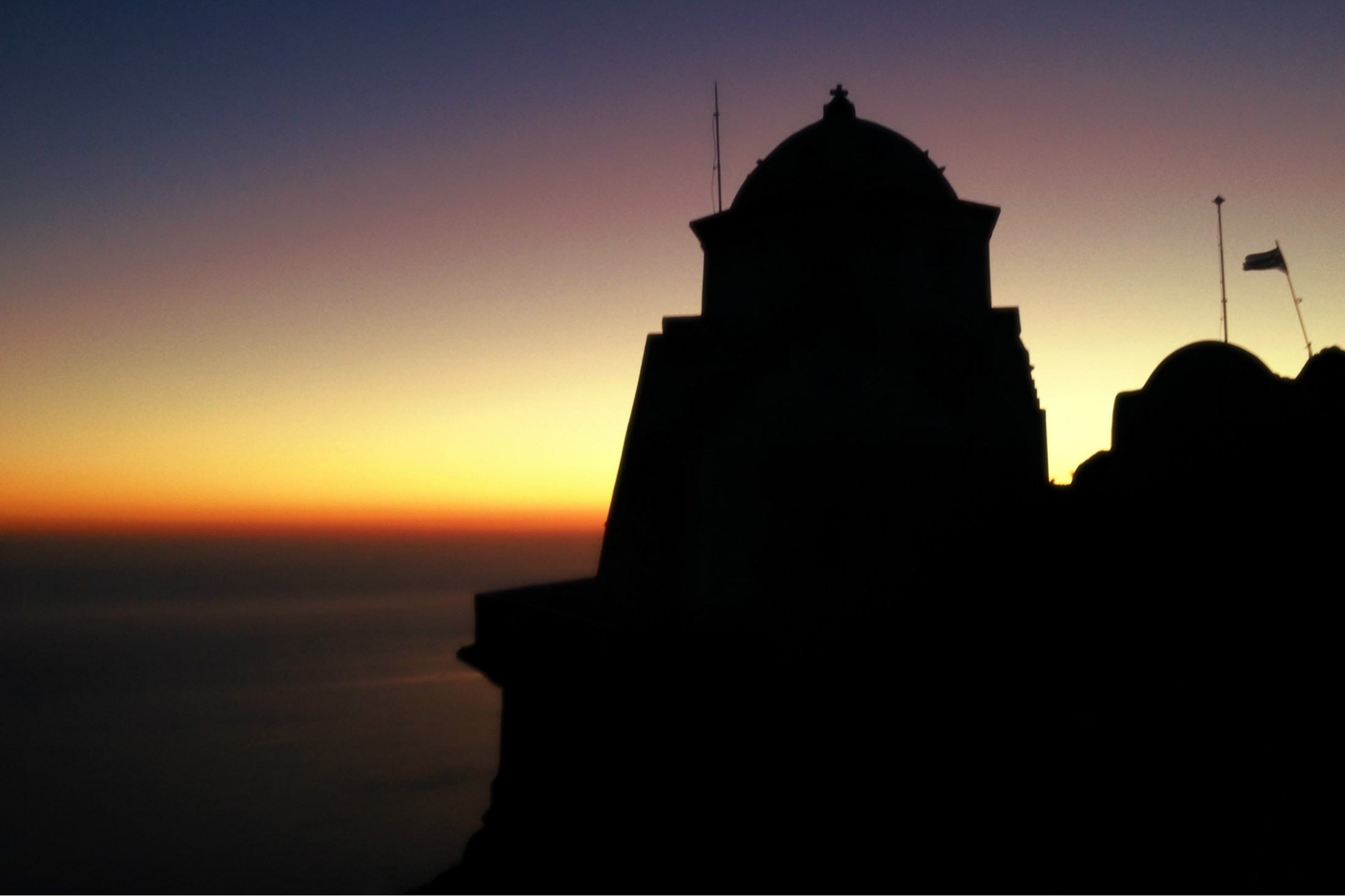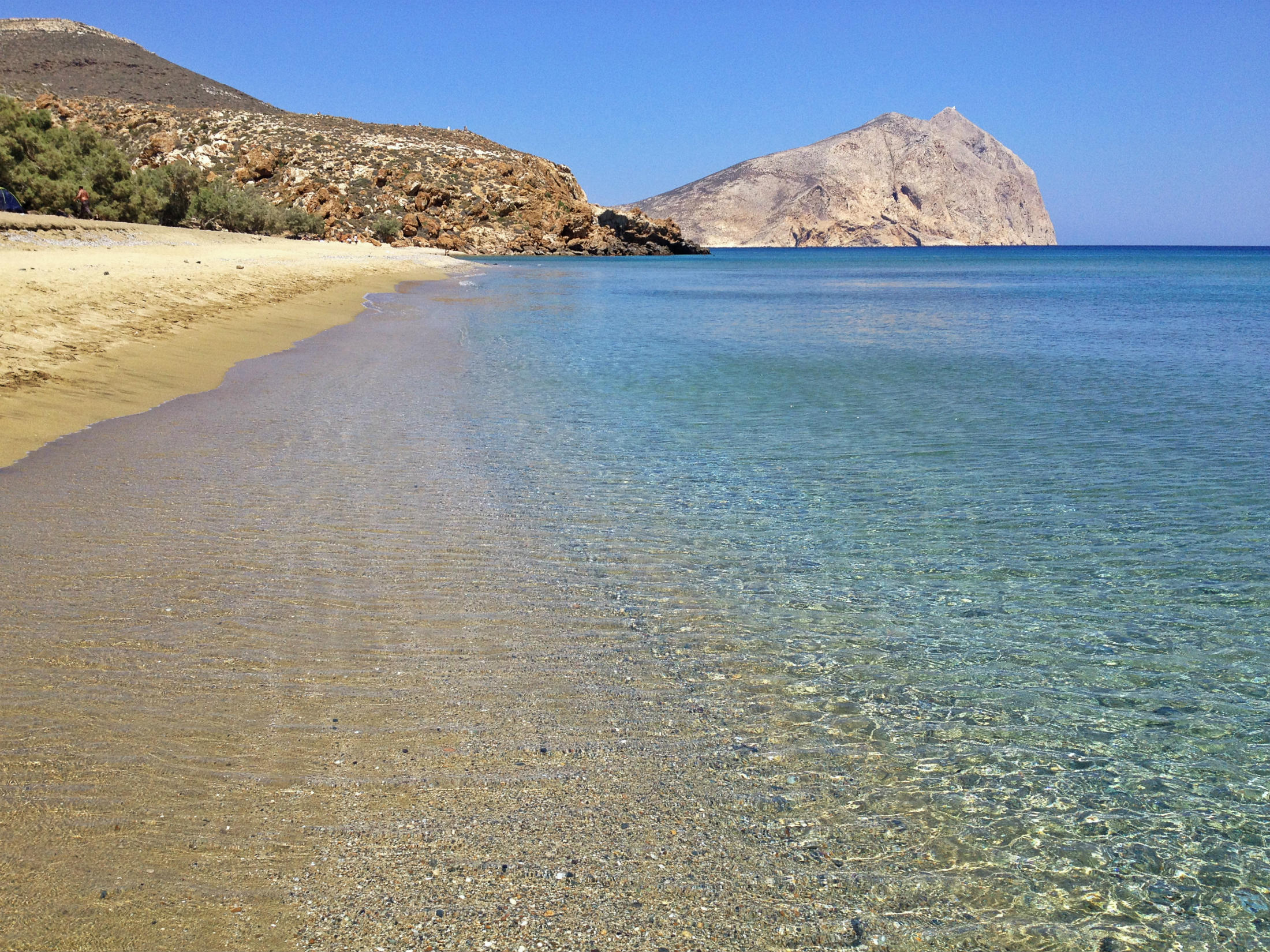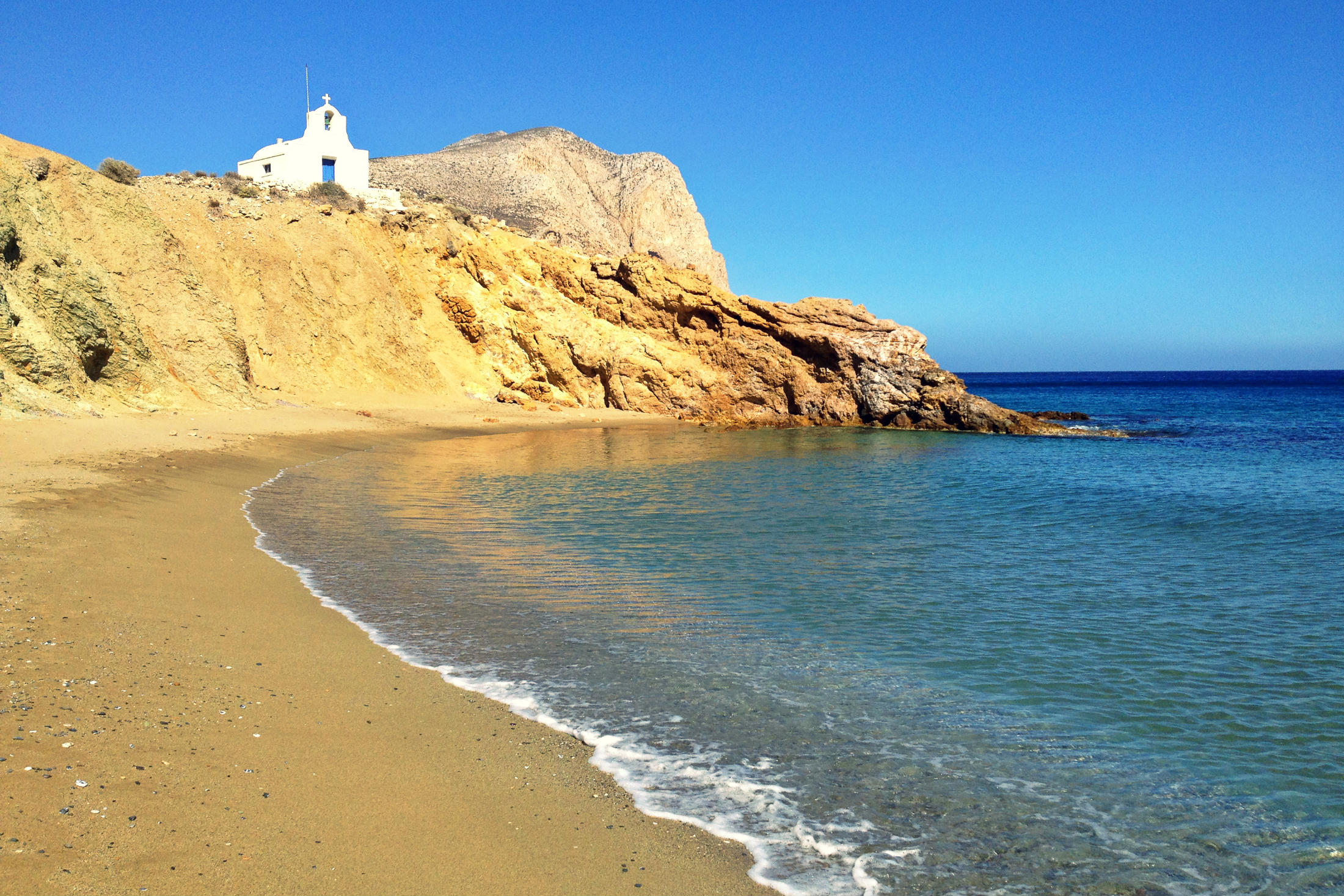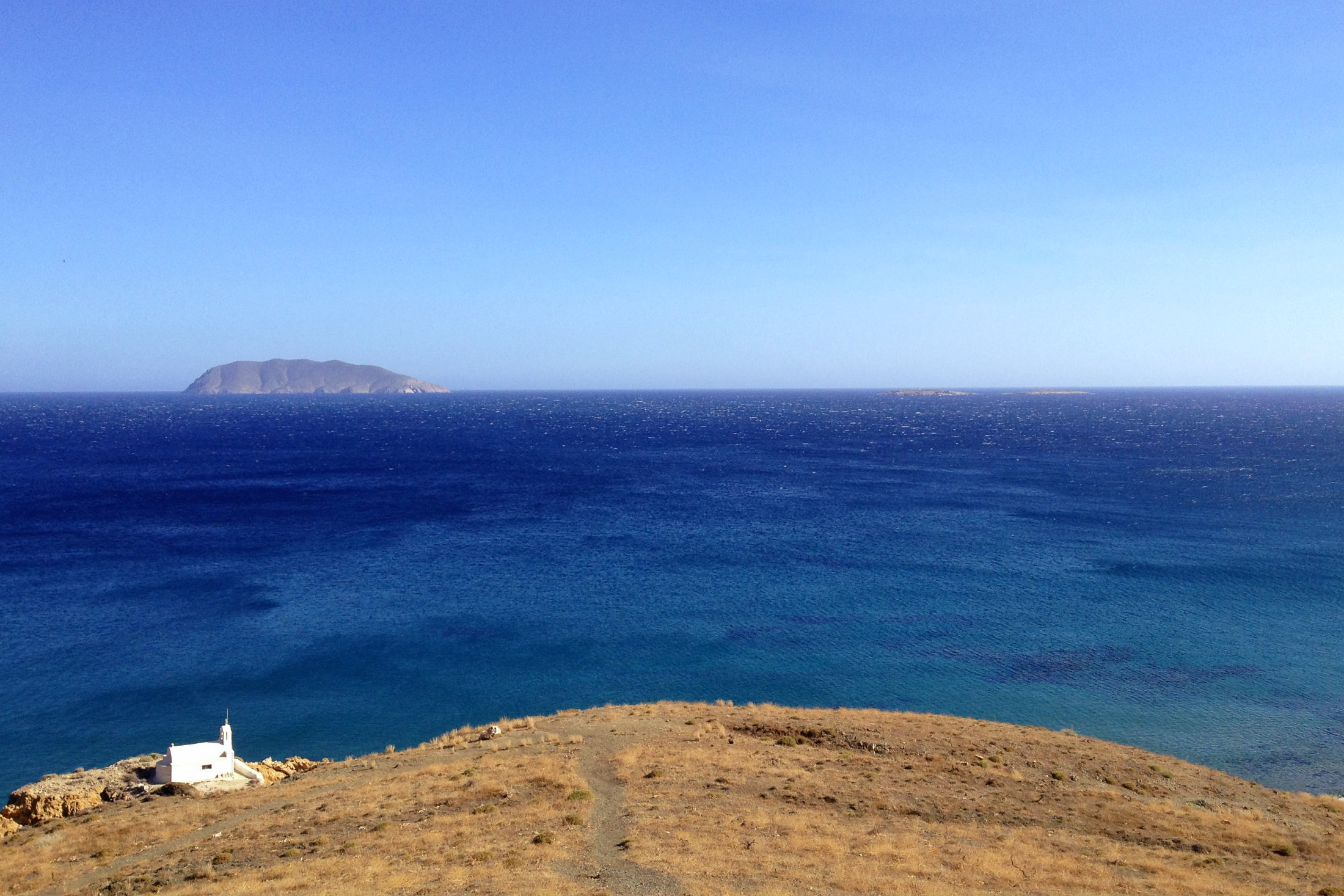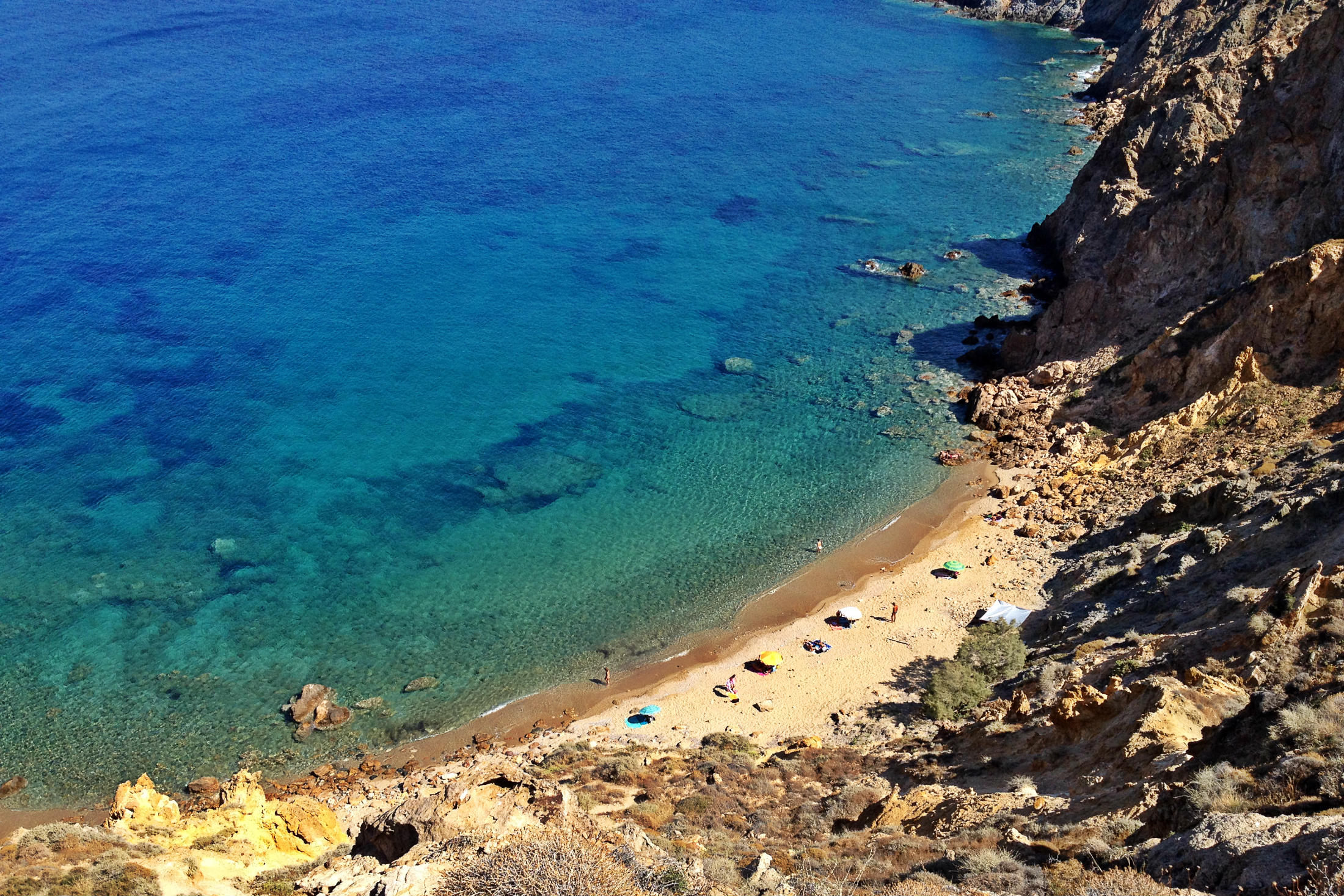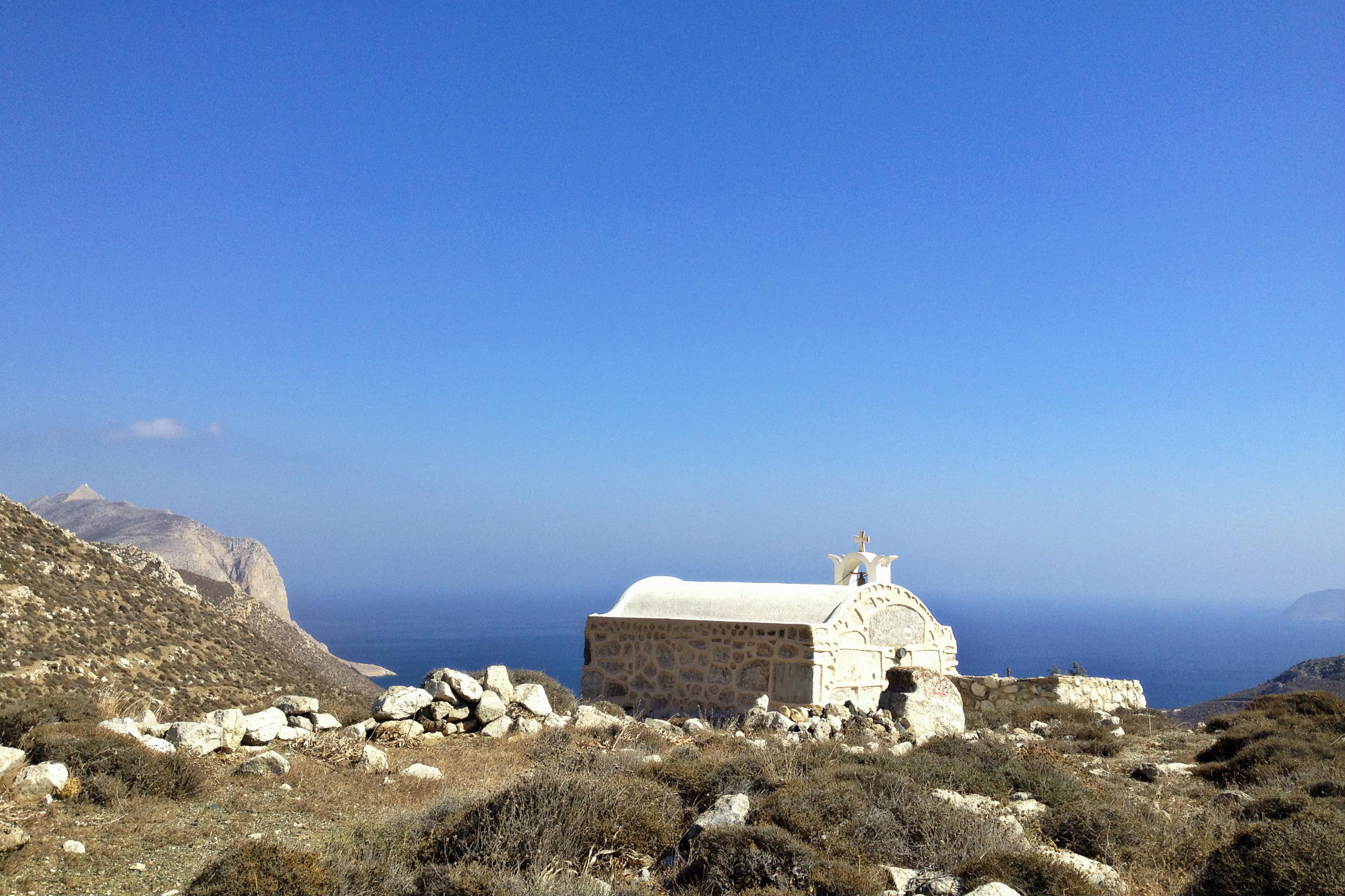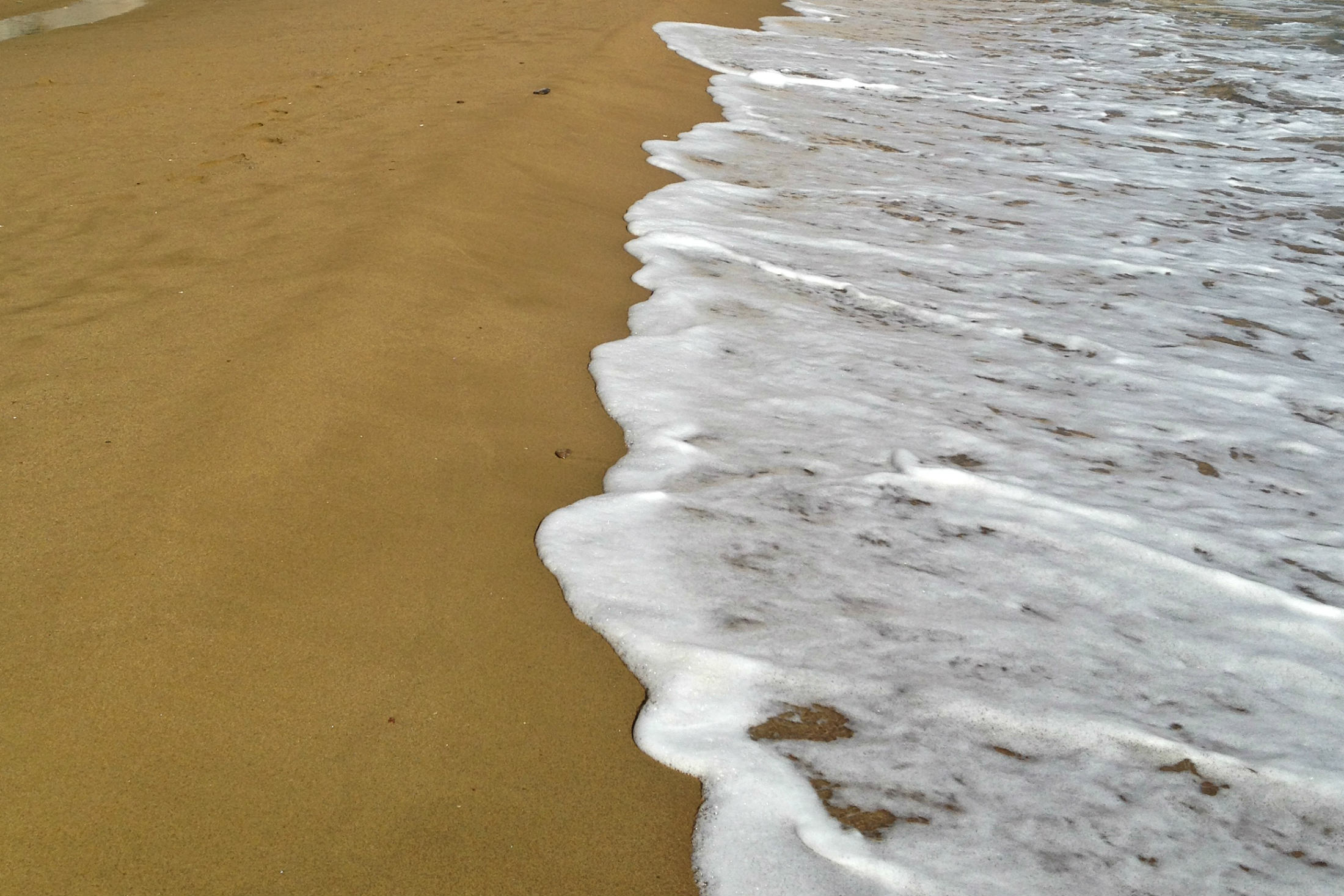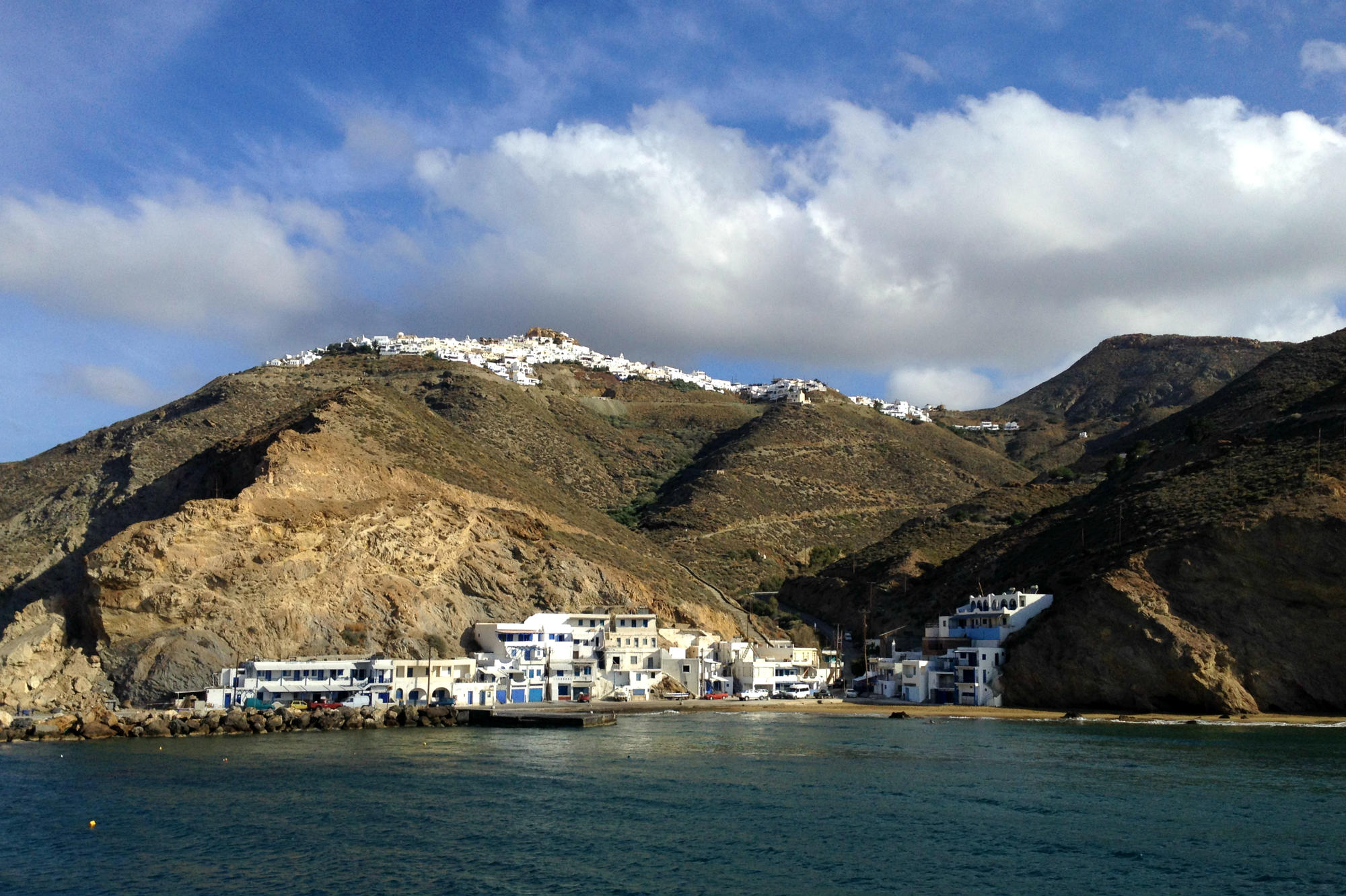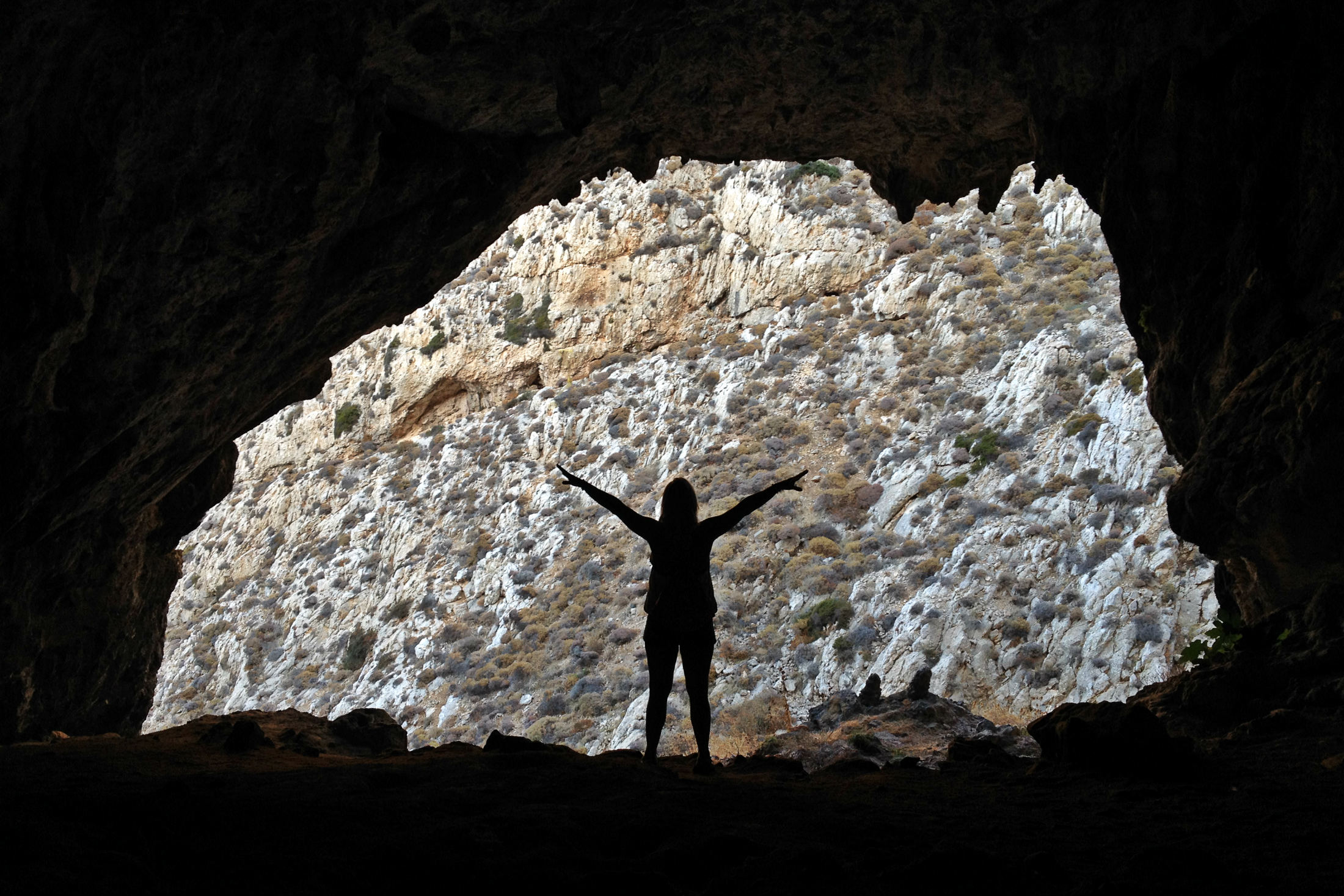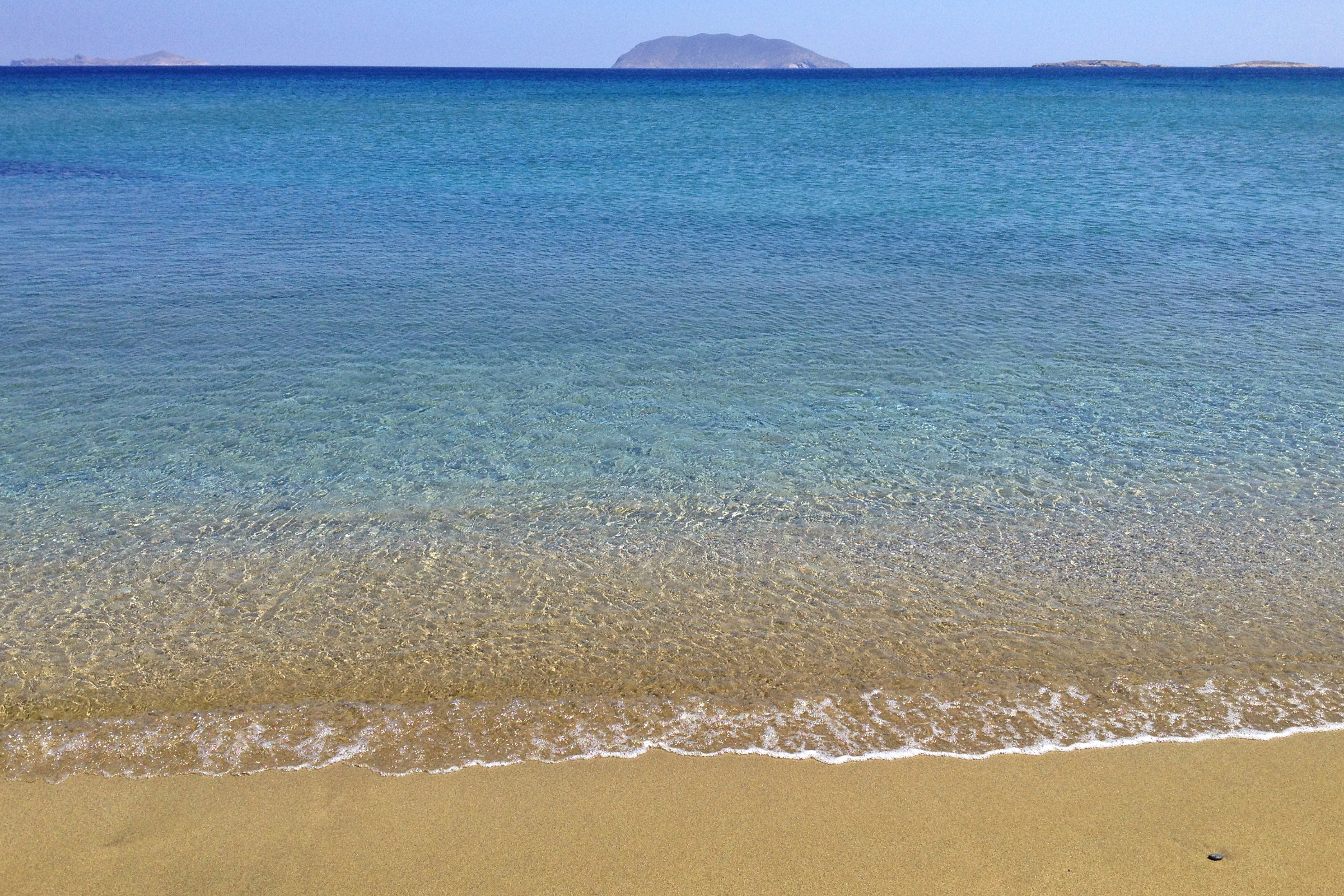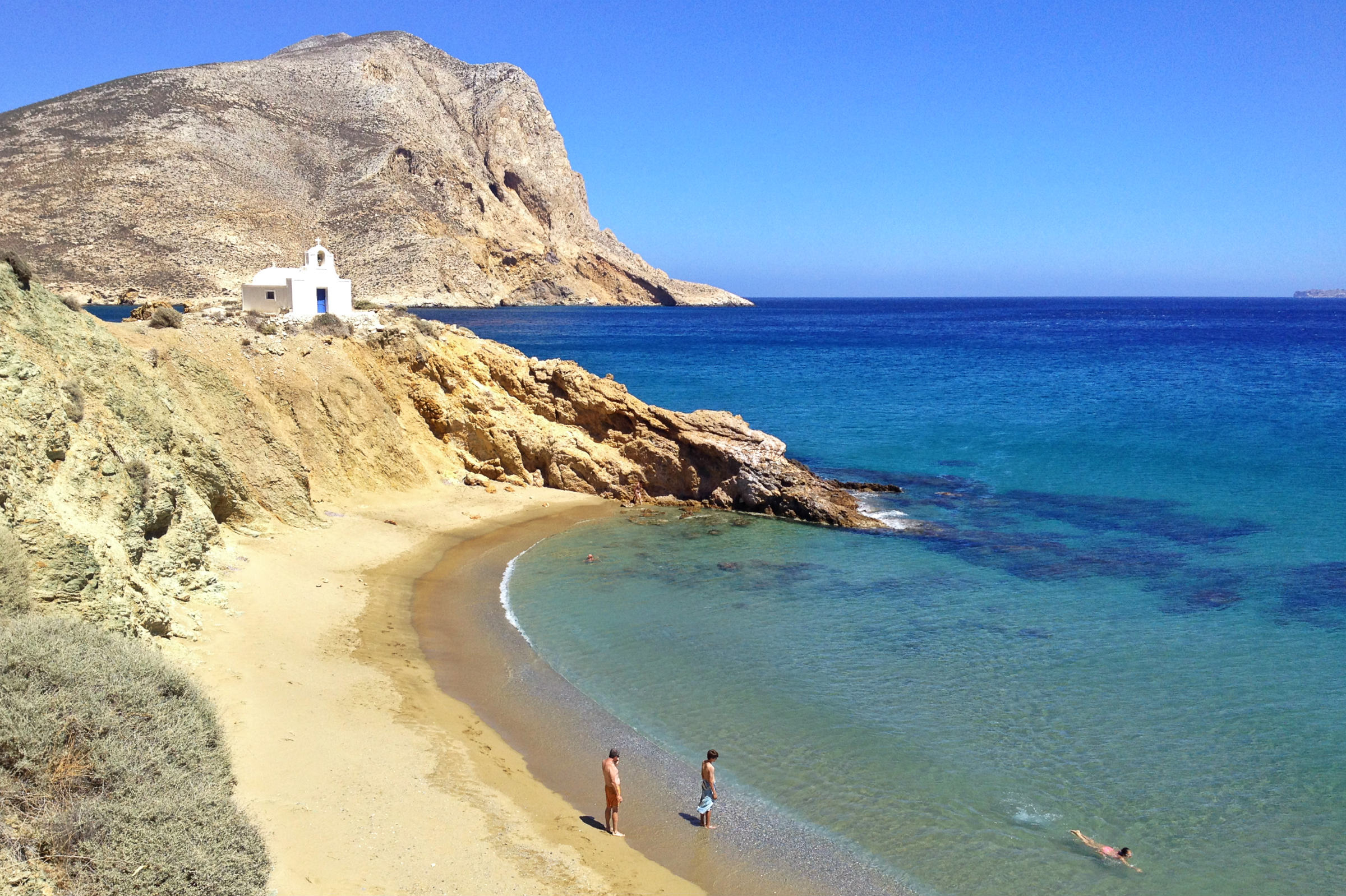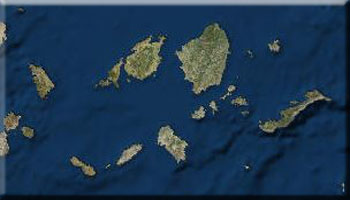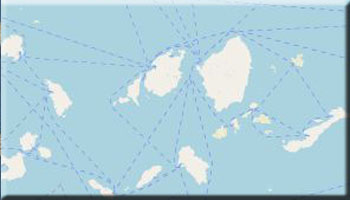An island of unique natural beauty, Anafi boasts an expansive sea-level horizon-a rare topographic characteristic for a Cycladic island seen in the number of verdant gardens dotting the landscape. Hora, the island's capital, is built amphitheatrically on a hill. The settlement features white-washed houses capped by colorful domed roofs and narrow stone passages built over the ruins of a Venetian castle.
Anafi's charm lies in a landscape and settlements virtually untouched by time and a coast rimmed by beaches of golden sand and shimmering teal water. The island is the perfect destination for holidaymakers seeking serenity, a pristine natural environment, and the simplicity of an island lifestyle in the embrace of locals' heartfelt hospitality.
A basic road network, completed in the last few years, makes getting around the island easier for visitors with private transport. Walkers will revel in the ease with which they can combine sightseeing and visits to archaeological sites with a broader exploration of the island. Anafi is also recommended for climbers, provided they have the appropriate gear.
Public transport on the island is adequate, with frequent service between Hora and Ayios Nikolaos (the port), Kleisidi, Katsouni, Flamouro, Mikros Roukounas, Megalos Roukounas, Megas Potamos, Ayii Anaryiri and Monastiri. Renting a bike or scooter is another way to get around.
There are year-round boat connections to Piraeus, Syros, Paros, Naxos, Ios, Sikinos, Folegandros, Thirasia, and Santorini. There are no organized camping facilities on the island, but there are a number of newly-built rental rooms at Hora, the port, Kleisidi, and Roukounas.
According to mythology, Anafi (from the Greek anadysi, or rising) rose from the waters of the Aegean as a result of the god Apollo's desire to provide a safe harbor for Jason's storm-struck Argonauts. To thank the god, they built the temple of Apollo Astealtas near the Zoodohos Pigi monastery and honored the god with the annual Yakinthia festival.
Other myths claim Anafi was the home of Aeolus, god of the winds, who helped Odysseus with favorable winds on his journey home. The island was settled by the Phoenicians. They were succeeded by the Dorians, who founded the city of Anafi.
In the fifth century B.C., Anafi joined the Athenian League or Confederacy. In medieval times, the island came under the administration of the Duchy of Naxos and was ruled by Venetian leaders. However, they were unable to protect the island from marauding pirates who forced many of its inhabitants to flee to Crete. In 1537, Anafi was pillaged by the pirate Barbarossa, then fell under Ottoman rule. It took an active part in the Greek independence revolution of 1821 and officially became a part of the modern Greek state in 1832.
During his reign, King Othon (Otto) was impressed by the Anafiotes' reputation as builders and brought many, by decree, to Athens to build his palace. They settled on the foothills of the Acropolis, building small homes in the traditional architectural style of their island. The district, located in the Greek capital's old quarter of Plaka, is known as "Anafiotika" and is considered one of the city's architectural gems.
With its stone-paved passageways and old windmills, Hora is a tourist attraction in itself. Other sights include the ruins of a Venetian castle, a main observation point for vessels crossing the Cretan sea. Finds from excavations at the ancient city of Kastelli are exhibited at the Archaeological Collection.
Other sights around the island include the ruins of the temple of Apollo Anafios and the Monastery of Zoodohou Pigi on the temple's peribolos (enclosed court) and the early 16th century Monastery of Panayia Kalamiotissa on Mount Kalamos.
The island also boasts a number of interesting caves. The best-known is Dragontospilo (dragon's cave) with its multicolored stalactites and stalagmites. Located on Mount Kalamos, it's remote and barely accessible. Another cave noted for its stalactite and stalagmite formations is Prassa, which is largely unexplored. The ruins of the ancient city of Anafi can be seen on Kastelli hill. The ancient port, Katelimatsa, is mostly submerged.
Also worth visiting at Kastelli is the small church of Panayia Dokariou. Vigla, the island's highest peak, rises to an altitude of 584 meters. Fryktories, a settlement dated to A.D. 900 -1000 and a primary communication point in the Mediterranean, stood atop Vigla.
Beaches on Anafi's southern coast are sandy, sheltered, and quite popular among holidaymakers and locals alike. Traveling south from the port, the coast curves into Kleisidi, Katsouni, Flamouro, Katelimatsa (the ancient harbor), Mikros Roukounas, Megalos Roukounas, Megas Potamos, Ayii Anaryiri, and Monastiri.
All beaches are accessible either on foot, by bus, or by boat. Beaches along the island's northern coast are secluded and shingle. Anafi also offers good fishing.
In August, Anafi and the global Association of Anafians organize the "Yakinthia" sports competition - a popular venue that draws numerous participants. The festival's final day features an open-air village feast in Hora's Ayios Nikolaos square, with music, dancing, wine, and food.
A communal feast featuring local specialties is also part of the observances of the feast of Panayia Kalamiotissa on September 7-8.
| ANAFI COMMUNITY | 2286061266 |
| CITIZENS SERVICE BUREAU (KEP) | 2286061390 |
| POLICE STATION | 2286061216 |
| MEDICAL CENTRE OF ANAFI | 2286061215 |
| BUS LOCAL MUNICIPALITY | 2286061266 |
| POST OFFICE-POSTAL SAVINGS | 2286061203 |









